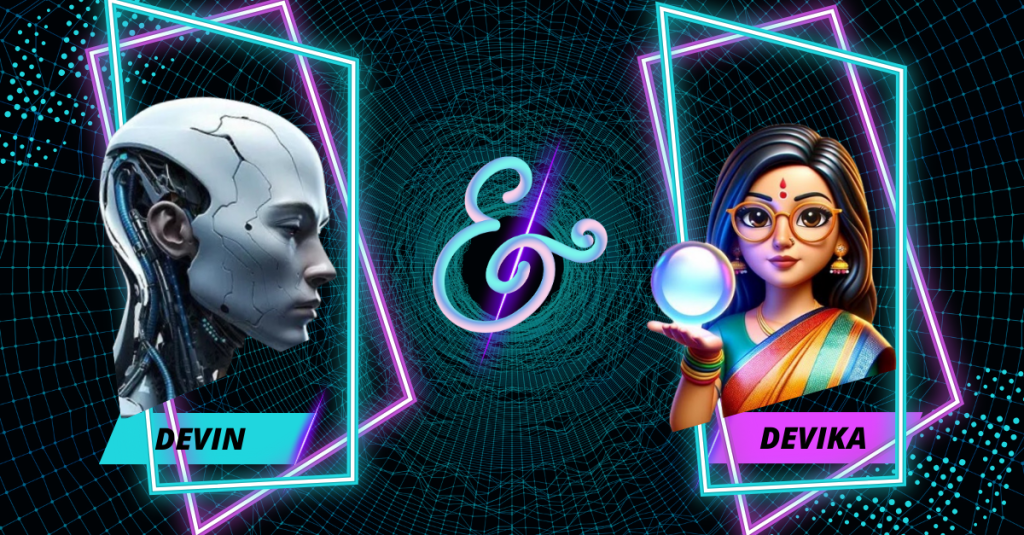Generative AI refers to artificial intelligence systems that are capable of producing novel content creation. This covers text, images, music, and other works. What is generative AI, and how does it work is distinct from regular AI, which simply inspects the given data and does some processing, whereas generative AI produces new information.
The Evolution of Generative AI
The term What is generative AI, and how does it work has changed quite a lot during these years. The first generation of these systems consisted of rudimentary expansion models that occasionally ended up with results that were skewed heavily from what a real person would do. Then, thanks to improvements in machine learning and better hardware, new generative AI is able to produce complex pieces of work. This change has made it possible for What is generative AI, and how does it work to be used in different sectors from entertainment to healthcare.
How generative AI differs from other AI types
Such artificial intelligent systems in use today are called traditional AIs. They are designed rules to perform certain operations such as classification, predictions, and making decisions. When thinking of What is generative AI, and how does it work, however, that is not the case. It is about the creation of something. Be it a poem, some musical piece, or a distinctive style of painting, usually, the generative AI seeks to achieve what a radical new content maker would do and not someone who is just copying everything that he has trained on.
Generative AI is Composed of Various Disciplines
What is generative AI, and how does it work thrives where several disciplines’ boundaries are present, such as in computer science, cognitive science, and creativity. Because of this interdisciplinary nature in generative AI, it adopts the benefits of developments and innovations from different fields making it flexible and strong. Individuals from various fields of study such as social science, engineering, and electrical engineering help in the growth of What is generative AI, and how does it work that extends its horizons of usage.
Different Applications of Generative AI
Listed below are the most popular examples of What is generative AI, and how does it work:
- GPT-3: This product by OpenAI is aimed at generating human-like text content of any topic provided to it. It is capable of composing essays, poetry, and conversations.
- DALL-E: A graphic designer from OpenAI, DALL-E photographs objects led by words. This facilitates the creation of images that are so detailed and creative.
- DeepArt: This AI is capable of producing cool, original designs in the styles of well-known artists. Pictures can be edited into the style of Van Gogh or Picasso paintings.
What are the Mechanisms Behind Generative AI?
Generative AI consists of the generation of novel content thanks to the use of sophisticated algorithms and a lot of data. Here are the steps in how What is generative AI, and how does it work operates:
- Data Collection: The first step in the development of a generative AI model is the acquisition of a massive amount of data. For instance, when the content generation is the focus, the dataset would consist of many articles, books, and other texts. The scope and quality of data collected in this step matter so much because it determines the coherence and relevance of subsequent generations by the AI.
It is clear that data collection involves not only the number of elements but their purpose and distribution. A diverse dataset makes it possible for What is generative AI, and how does it work to write on almost anything and in different ways. Data curation is not a one-time event but rather a long-term strategy where some data is usually added to make the model current. - Training the Model: Then, the said data is provided to the AI model and this is the part where the training occurs. During training, the model picks up patterns, structures, and relations in the data. This can be a long and tedious process, and powerful machines are often needed. The model is trained for several cycles where it is updated each time with better tools to enhance comprehension and generation.
The mechanism of training involves several steps: pre-training, training, and fine-tuning. Pre-training enables What is generative AI, and how does it work to comprehend language or image characteristics whereas fine-tuning adjusts it for detailed objectives. This type of learning is usually heavy on computer processing, regularly requiring some sophisticated equipment such as GPUs, TPUs, and so on to hasten the time used for the training. - Contents Creation: After the training phase, the AI model is ready and begins to perform its task and create content. In text, this entails the writer generating a piece of work based on the prompt provided to him from the model. In visual, the writer gets the ability to make images from the text written. This way of creating content has been known to produce content that is so unique and interesting that even if an ordinary person may not tell the difference; it will be treated just like content created by a normal human being.
The process of generating content consists of several phases – the first and the last phase being generation and improvement respectively. The drafting period may include the first draft, second draft, and the last draft while the last phase will only work from one draft. This cycle guarantees high standards of the content generated and its effectiveness towards achieving the targeted goals. - Fine-Tuning: Finally, the last step entails improving the model in terms of accuracy and creativity. Most often, adjustments of the algorithms in the model and sometimes further diversity of the data available are employed to enhance the model further. In fact, it is a fast and active process which is done in order for the model to still be able to provide timely and accurate solutions despite any new available data.
Task-specific appealing fine-tuning governs requirements regarding the nature of the created content or its styles. This enhances the specialization of What is generative AI, and how does it work and its efficacy in producing the intended outputs. Progressive tracking and changes are needed to sustain the output of the model. - Evaluation and Feedback: Finally, the evaluation of the performance of the model is carried out to the last degree of fine-tuned which underwent fine-tuning earlier. This includes performing evaluation of the model on different tasks and taking feedback to improve upon the blocks. User feedback is very important at this stage, as it provides information about how well the model performs in practice.
Evaluation has a number of criteria, be it quantities such as accuracy and user satisfaction or numbers of users satisfied with What is generative AI, and how does it work. This objective-based approach also measures the user of the model other than typical issuance to stakeholders.
The Implications of Generative AI
Generative AI will change the game in various sectors. Mentioned below are some of the major implications:
Creative Industries
What is generative AI, and how does it work? This technology is already being utilized in creative industries such as arts, music, and writing. For instance, a musician can use AI to create an array of ideas whereas a journalist can get AI to help him in composing a number of articles or an entire novel. This particular technology expands creativity more than conventional ones, allowing artists and creators to use their imagination and inspiration into areas that have never been explored before.
As for music, What is generative AI, and how does it work? AI can be used to create original music and/or work as a co-composer with a human musician. In writing, generative AI can help writers to create ideas, structure some outlines, and even complete full novel works. These usages are boundless; that is why generative AI can be beneficial for the people working in creative fields.
Healthcare
In healthcare, What is generative AI, and how does it work? Generative AI aids in the formulation of new drugs, the tailoring of treatment regimes, or the image generation for diagnostic purposes. Big data in medicine when analyzed with the help of AI can provide new insights suggesting new treatment strategies. This will enhance health correctional measures to patients as well as reduce the costs of providing these services.
Medical imaging can help radiologists detect errors that regular observations may miss to improve diagnostic accuracy. In the field of drug design, What is generative AI, and how does it work? Generative AI enables one to perform virtual chemical reactions and screen for active drugs thus shortening the time taken to avail new drugs to the market. The depth of the potential benefits of generative AI in the medical field is very encouraging in terms of the expectations of the patients and the doctors as well.
Business
Creative businesses optimally place generative AI in communication as well as in generating content. What is generative AI, and how does it work? For example, advertisements, social media updates, and product description generated by AI can be more economical and resourceful. As more resources are channeled towards transacting rather than generating ideas for new products, strategic programs can be started and cultivated.
What is generative AI, and how does it work? Generative AI can aid businesses in studying the trends of the market as well as shopper’s movements and preferences. Ready-to-order advertising campaigns and reproduced ad content can increase customer loyalty and boost turnover. The implementation generative AI in doing business activities makes the business more effective and competitive.
Ethical Considerations
In as much as generative AI brings many advantages, What is generative AI, and how does it work? there are also some ethical issues. Issues like data privacy, the possibility of abuse, and the effect on employment needs to be looked at. Building faith and loyalty and ethical use of the tools requires making all processes clear and answerable to the AI.
What is generative AI, and how does it work? A lot of data is needed in generative AI, and as a result, data privacy becomes an issue. It is the utilization of this data which poses a challenge concerning the privacy of an individual. Also, the very nature of its perceived abuses, such as generating spam or forging images, suggests the same kinds of challenges-ethics that have to be managed.
Legal Implications
Generative AI also raises legal issues of ownership concerning the content produced. What is generative AI, and how does it work? When it comes to the content generated by AI, who owns it and how should it be controlled? The latter are complex and require adequate attention to be able to protect all the stakeholders in terms of creators and users.
What is generative AI, and how does it work? Regulatory structures need to change in order to resolve the challenges that generative AI poses. Laws and policies that address ownership of and rights to AI artworks need to be established. Negotiation among lawyers, policymakers, and technologists is needed to forge regulation that meets the principle of progress and the need for legal and ethical action.
Societal Impact
Even when one sector is focused on generative AI, the effect may also be felt in other arenas. What is generative AI, and how does it work? It will affect education, entertainment and even the normal day of a person. Generative AI has the capacity of enriching and transforming communities by widening creativity and creating new avenues for creation.
For example, in education, What is generative AI, and how does it work? the AI can be used to develop customized educational content while helping teachers with learning materials. For entertainment, AI movies, games, and music can reach out to audiences with new content. There is a wide range of other implications of Generative AI, and this includes changing the complete infrastructure of how society conducts business activities, social activities, and other daily interactions.
Application of Generative AI in the Real World
Generative AI is not just a theoretical concept but has already found application in many areas. Here are a few examples:
Creation of Art and Design
AI-generated art is available and is being utilized by artists. What is generative AI, and how does it work? For instance, the Portrait of Edmond de Belamy which is a product of AI algorithms was auctioned for 432,500 US dollars, which tells us that AI has great abilities to make valuable items. In the domain of art and design production, such synergetic approaches greatly expand possibilities, because AI can help both with product design and visual content.
Writing and Journalism
News and article production has also become partially automated in certain media outlets due to the use of programs like AI. What is generative AI, and how does it work? What this means is that journalists spend less time doing routine reporting as the AI takes over the simple stories and they can dedicate more time covering intricate stories.
Gaming
In the gaming sector, What is generative AI, and how does it work? Generative AI has the capability of devising authentic characters, environments and even stages of the game enhancing the user experience.
Fashion
Fashion designers have embraced the innovative ideas and designs brought by the use of AI in the fashion industry. With this, a better and broader range of collections can be achieved and new and pricking ideas will also be attained. By researching detected patterns and preferences associated with the audience, AI will produce masks and styles that can be worn by such audiences.
AI can also help in the marketing by assisting in pattern making and minimizing the wastage. This would make the fashion production more sustainable and efficient. Applying generative AI in Fashion is a game changer in the way the industry operates as new avenues of creativity and sustainability abound.
Education
In addition, generative AI is encroaching into the education industry. AI is capable of designing customized curriculum guides, serving the needs of students differently, and monitoring students’ progress in real time. This has the potential to improve education for all learners.
Concerning teaching and instruction delivery, curricular text or lesson content generated by artificial intelligence can supplement teachers. Learning, particularly student learning, in addition to classroom instruction can be supported with the help of AI technology. There has been a shift in the conventional pedagogical practices owing to the infusion of generative AI in education.
Entertainment
In entertainment, films, music, video games and several other forms of media are produced with the help of generative AI. With the different uses of AI in music, producing films and other creativity work, AI forms a part of the film makers and producers.
Another facet of content created by AI is the personalization of the entertainments in ways that appeal to people’s passions. This may increase the levels of audience participation, as well as create new types of entertaining interactions. The application of generative AI in entertainment is bringing about new transformations within the industry.
Obstacles and Next Steps
Whether this technology would achieve its greater potential is still hypothetical. Generative AI faces several challenges including the ones outlined below:
Content Quality Determination
A challenge when it comes to the AI generated content is assuring its quality and truthfulness. The content must be scrutinized for flaws, undertones, and appropriateness. This calls for vigorous evaluation strategies and attention to detail to ensure that some measures are stuck to.
Quality control includes user input and improving user models. User feedback is helpful in guiding the developers by showing parts that need modification. Quality is of importance to all the parties, and should not be an afterthought, but a shared responsibility of developers, users, and all the participants.
Ethical Predicaments
Some ethical implications as mentioned earlier like data protection as well as the act itself could be very dangerous. There is need to stick to policies and principles that would guide the practice. Trust is an important factor that can only be assured when the systems are aimed at harnessing and utilizing AI are in the forefront of improvement because transparency and accountability are key aspects of ethical practice.
Additionally, the concern can also be with respect to the job opportunities and how AI can create biased content. To be able to deal with these concerns, a multi disciplinary approach is called for involving the co-ordination of the technologists, the ethicists and also the policymakers. It is very important to develop guidelines and standards on ethics in relation to generative AI so that the good of generative AI is realized by the society.
We, Wildnet Technologies, have been leading the digital marketing industry with our 17+ years of experience in catering digital marketing services. We have catered to 2100+ clients and helped them garner USD 196K in organic revenue.
Our clients range from start-ups to 26+ Fortune 500 companies!
Read more:
- How Generative AI is Shaping the Future of Healthcare Marketing Services?
- Onsite Marketing Strategies to Maximize Lead Generation and Product Awareness | Case Study
- Motorola walks the runway with entirely AI-generated campaign
- 10 Ways to Generate More Organic Leads Through Your Website in 2024: 5 Bonus Lead Magnets
- Generative Engine Optimization (GEO): Enhancing AI-Driven Content for Search






